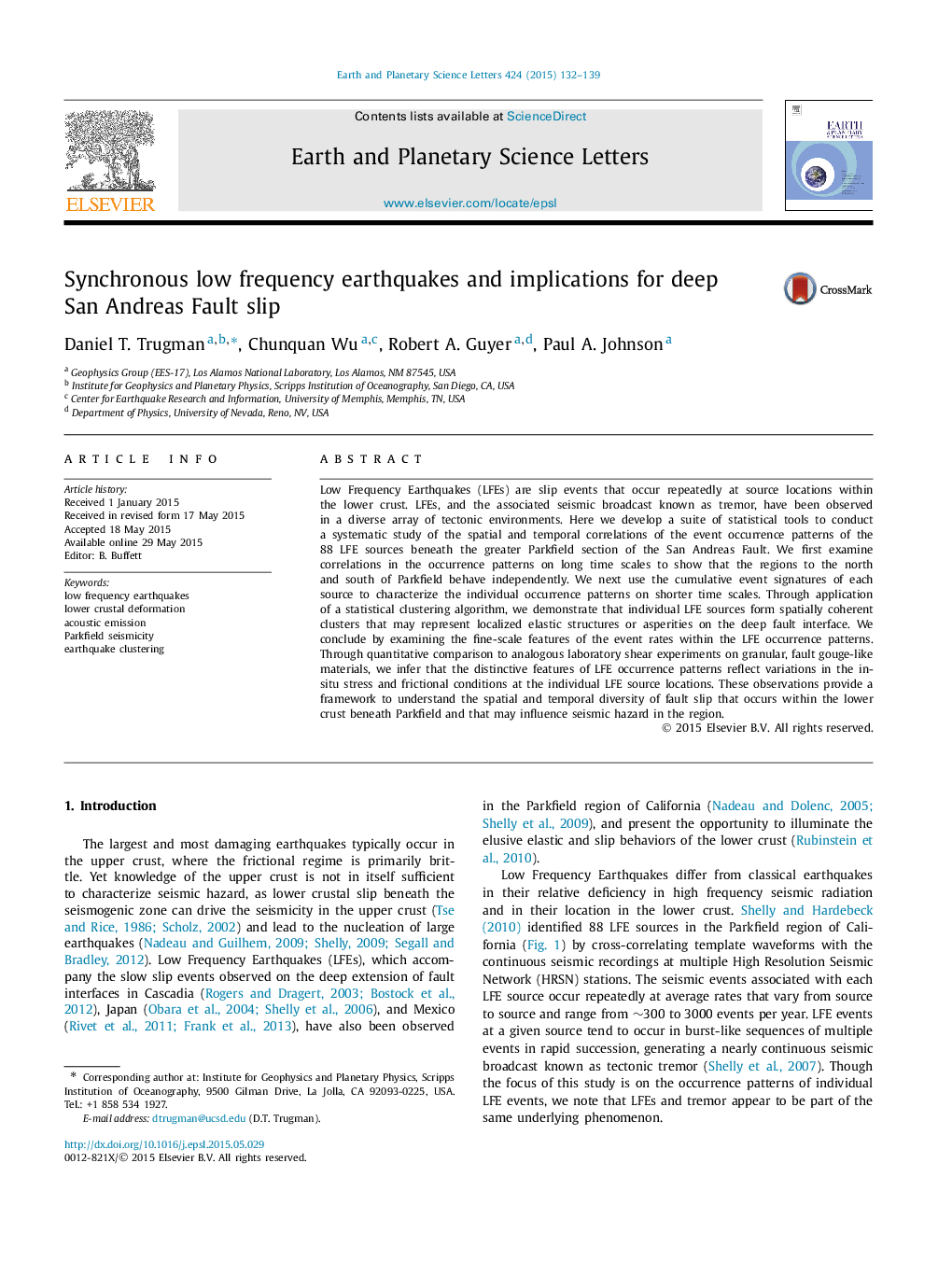| Article ID | Journal | Published Year | Pages | File Type |
|---|---|---|---|---|
| 6428224 | Earth and Planetary Science Letters | 2015 | 8 Pages |
Abstract
Low Frequency Earthquakes (LFEs) are slip events that occur repeatedly at source locations within the lower crust. LFEs, and the associated seismic broadcast known as tremor, have been observed in a diverse array of tectonic environments. Here we develop a suite of statistical tools to conduct a systematic study of the spatial and temporal correlations of the event occurrence patterns of the 88 LFE sources beneath the greater Parkfield section of the San Andreas Fault. We first examine correlations in the occurrence patterns on long time scales to show that the regions to the north and south of Parkfield behave independently. We next use the cumulative event signatures of each source to characterize the individual occurrence patterns on shorter time scales. Through application of a statistical clustering algorithm, we demonstrate that individual LFE sources form spatially coherent clusters that may represent localized elastic structures or asperities on the deep fault interface. We conclude by examining the fine-scale features of the event rates within the LFE occurrence patterns. Through quantitative comparison to analogous laboratory shear experiments on granular, fault gouge-like materials, we infer that the distinctive features of LFE occurrence patterns reflect variations in the in-situ stress and frictional conditions at the individual LFE source locations. These observations provide a framework to understand the spatial and temporal diversity of fault slip that occurs within the lower crust beneath Parkfield and that may influence seismic hazard in the region.
Related Topics
Physical Sciences and Engineering
Earth and Planetary Sciences
Earth and Planetary Sciences (General)
Authors
Daniel T. Trugman, Chunquan Wu, Robert A. Guyer, Paul A. Johnson,
